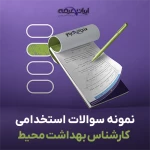Abstract
Background: Traditionally, assessment of psychiatric symptoms has been relying on their retrospective report to a trained interviewer. The emergence of smartphones facilitates passive sensor-based monitoring and active real-time monitoring through time-stamped prompts; however there are few validated self-report measures designed for this purpose. Methods: We introduce a novel, compact questionnaire, Mood Zoom (MZ), embedded in a customised smart-phone application. MZ asks participants to rate anxiety, elation, sadness, anger, irritability and energy on a 7-point Likert scale. For comparison, we used four standard clinical questionnaires administered to participants weekly to quantify mania (ASRM), depression (QIDS), anxiety (GAD-7), and quality of life (EQ-5D). We monitored 48 Bipolar Disorder (BD), 31 Borderline Personality Disorders (BPD) and 51 Healthy control (HC) participants to study longitudinal (median7iqr: 3137194 days) variation and differences of mood traits by exploring the data using diverse time-series tools. Results: MZ correlated well ( ) R 0. 5, 0.0001 > < p with QIDS, GAD-7, and EQ-5D. We found statistically strong ( ) R 0. 3, 0.0001 > < p differences in variability in all questionnaires for the three cohorts. Compared to HC, BD and BPD participants exhibit different trends and variability, and on average had higher self-reported scores in mania, depression, and anxiety, and lower quality of life. In particular, analysis of MZ variability can differentiate BD and BPD which was not hitherto possible using the weekly questionnaires. Limitations: All reported scores rely on self-assessment; there is a lack of ongoing clinical assessment by experts to validate the findings. Conclusions: MZ could be used for efficient, long-term, effective daily monitoring of mood instability in clinical psychiatric practice.






